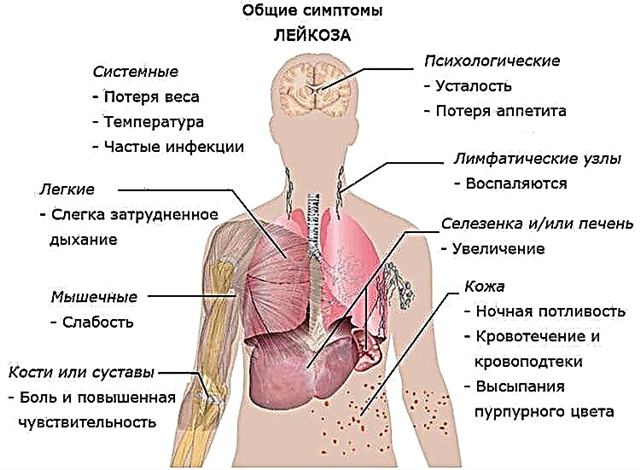We usually associate a runny nose with a cold or flu. But this is not always the case. Mucous discharge from the nose (which in the common people is called snot) is a defensive reaction of the inner lining of the nasal passages to stimuli. And there can be many annoying factors. The intensity and even the color of the discharge depends on them. Most often, transparent snot flows from the nose. So what does this mean and how to deal with them?
Reasons for the appearance
 All the reasons why transparent snot may appear in an adult can be divided into two large groups: exposure to pathogenic microorganisms or allergic reactions. It is easy enough to recognize them. With allergies, nasal discharge is very thin, almost like water, and runs intensely. Usually they are accompanied by severe swelling, tearing, coughing, shortness of breath. They can only be stopped by stopping contact with the allergen and taking antihistamines.
All the reasons why transparent snot may appear in an adult can be divided into two large groups: exposure to pathogenic microorganisms or allergic reactions. It is easy enough to recognize them. With allergies, nasal discharge is very thin, almost like water, and runs intensely. Usually they are accompanied by severe swelling, tearing, coughing, shortness of breath. They can only be stopped by stopping contact with the allergen and taking antihistamines.
If clear mucus from the nose appears after the infection has entered the upper respiratory tract, it is imperative to start treatment. Otherwise, the pathogenic microflora will grow and move deeper through the respiratory system. As a result, serious diseases such as:
- pharyngitis;
- sinusitis;
- sinusitis;
- frontal;
- adenoitis, etc.
If the disease is started, the transparent discharge will become thicker, become white in color, and may change color over time. This is a signal that an active inflammatory process continues, and treatment is either absent or does not help.
 Sometimes clear or white snot can accompany toothache or ear pain. An infection that causes tooth decay can invade the nasopharynx and cause inflammation and swelling of the mucous membranes. Likewise, germs and fungi can enter the nose from the middle ear, which connects to it through the Eustachian tube. In this case, it will be possible to get rid of snot completely, only by curing the underlying disease.
Sometimes clear or white snot can accompany toothache or ear pain. An infection that causes tooth decay can invade the nasopharynx and cause inflammation and swelling of the mucous membranes. Likewise, germs and fungi can enter the nose from the middle ear, which connects to it through the Eustachian tube. In this case, it will be possible to get rid of snot completely, only by curing the underlying disease.
Another reason for the appearance of abundant transparent nasal discharge is too dry indoor air. The mucous lining of the nasal passage is very delicate, with insufficient moisture it dries quickly. In the cold season, when a person is constantly in a room with an air conditioner, radiator or infrared heater, there is a high risk of drying out and irritating the nasal mucosa. As a protective reaction, transparent mucus begins to actively stand out.
Treatment options
It is necessary to treat a runny nose - transparent mucus or thick white discharge - symptomatically. But if, after the amount of discharge decreases, the cause is not found out, the result will be short-lived. It is especially important to timely detect an infection that has entered the body in order to begin treatment and prevent the development of diseases of the upper respiratory tract.
 The easiest way to quickly get rid of a clear liquid rhinitis is to drip vasoconstrictor drugs into the nose. It can be drops such as "Naphtizin", "Naphazolin", "Galazolin" and others. In most cases, they help quickly. But the problem is that if a runny nose is caused by dry air in the room, such drugs can only aggravate the problem, since they dry out the mucous membrane even more.
The easiest way to quickly get rid of a clear liquid rhinitis is to drip vasoconstrictor drugs into the nose. It can be drops such as "Naphtizin", "Naphazolin", "Galazolin" and others. In most cases, they help quickly. But the problem is that if a runny nose is caused by dry air in the room, such drugs can only aggravate the problem, since they dry out the mucous membrane even more.
In addition, the use of vasoconstrictor drops is not shown to everyone. Some of them should not be dripped with sinusitis or other purulent inflammation of the nose. They are categorically contraindicated for people suffering from serious cardiovascular diseases, tachycardia, hypertension, atherosclerosis, glaucoma, meningitis. So you need to use them yourself with great care, and if you have the slightest doubt, you should consult a doctor.
If transparent snot appeared simultaneously with a cough, fever, headaches, weakness, this is a clear signal that an active inflammatory process is underway in the body, most likely caused by pathogenic microorganisms that have entered it.
Here, self-medication is dangerous - it will probably require the use of antibacterial drugs to curb the rapid development of the disease. Only a doctor should prescribe antibiotics, even if these are only nasal drops with antimicrobial components.
Prevention methods
 No one will be able to get rid of a cold once and for all. But that's good. As we already know, a runny nose is a protective reaction of the body. The snot moisturizes the mucous membrane, cleanses the nasal cavity from dirt and dust, and prevents the penetration of microbes into the nasopharynx and ears. But preventive measures will help to quickly get rid of abundant discharge, if they are already present, and also significantly reduce the risk of their appearance:
No one will be able to get rid of a cold once and for all. But that's good. As we already know, a runny nose is a protective reaction of the body. The snot moisturizes the mucous membrane, cleanses the nasal cavity from dirt and dust, and prevents the penetration of microbes into the nasopharynx and ears. But preventive measures will help to quickly get rid of abundant discharge, if they are already present, and also significantly reduce the risk of their appearance:
- avoid hypothermia and drafts;
- be sure to wear a hat in cold, windy and damp weather;
- humidify rooms in which heaters operate;
- not be in the immediate vicinity of a running air conditioner;
- watch your teeth, be sure to treat caries;
- in case of diseases of the ears, also for preventive purposes, drip the nose;
- Rinse the nose with cold saline solution 1-2 times a week;
- clean your nose only with disposable napkins (not a handkerchief!).
In those periods when the risk of contracting diseases transmitted by airborne droplets is high, you should avoid visiting mass events and crowded places. If you are forced to be in a crowd for a long time, then it is better to use a gauze bandage or just cover your mouth and nose with a scarf.
 Natural essential oils, which have powerful antibacterial and antiseptic properties, are a good prophylactic agent. You cannot apply them to the mucous membrane - you can cause a burn. In the premises, an aroma lamp will be useful. In 30 minutes of burning, it can eliminate up to 80% of pathogens in the room.
Natural essential oils, which have powerful antibacterial and antiseptic properties, are a good prophylactic agent. You cannot apply them to the mucous membrane - you can cause a burn. In the premises, an aroma lamp will be useful. In 30 minutes of burning, it can eliminate up to 80% of pathogens in the room.
The strongest bactericidal properties are found in eucalyptus, fir, pine, cedar and juniper oils.
Before using them for the first time, it is imperative to do an allergy test. To do this, 1 drop of the selected oil is applied to the skin of the wrist. And if there is no redness, rash and other unpleasant symptoms, the oil can be safely used. Before going outside in the cold season, you can put a few drops on the scarf - this will create a kind of protective field through which the infection will not penetrate.



